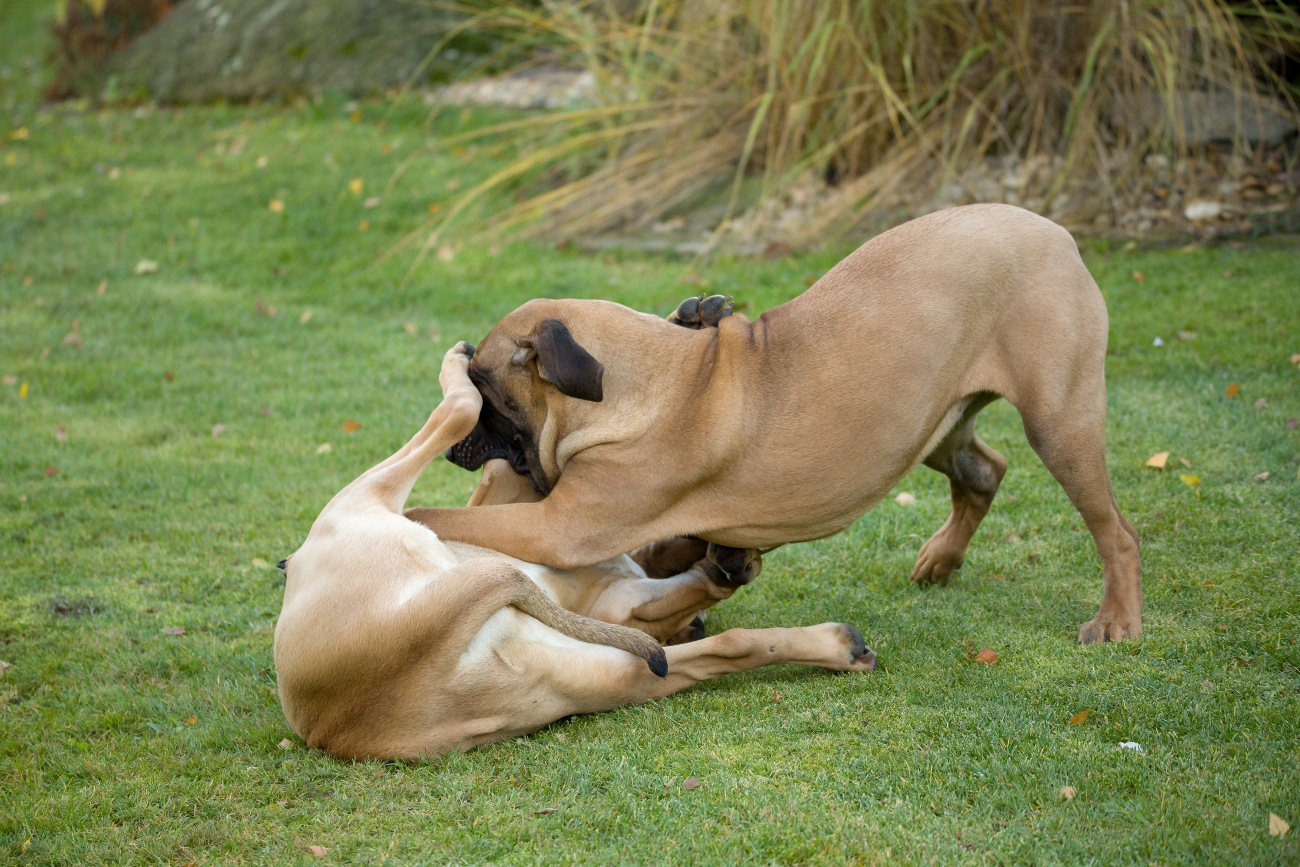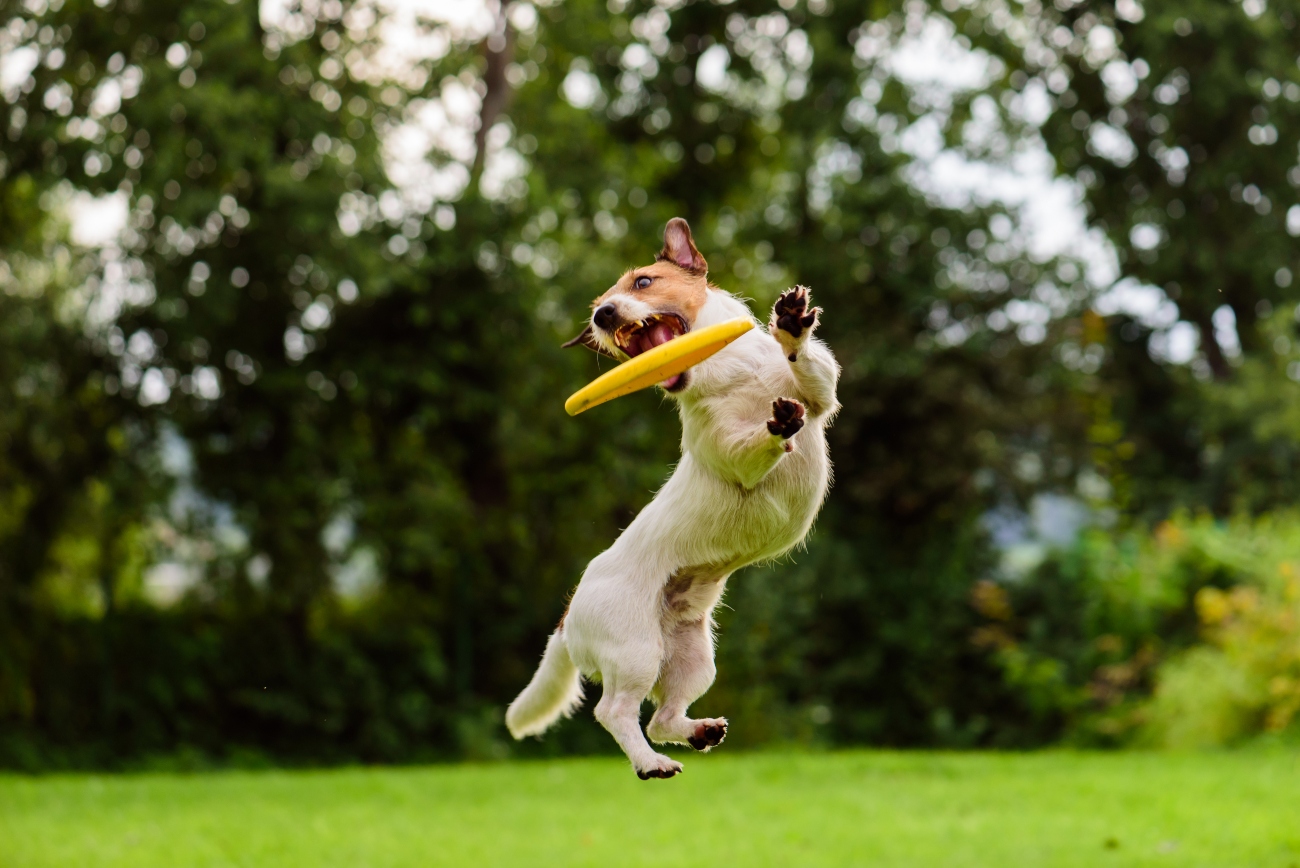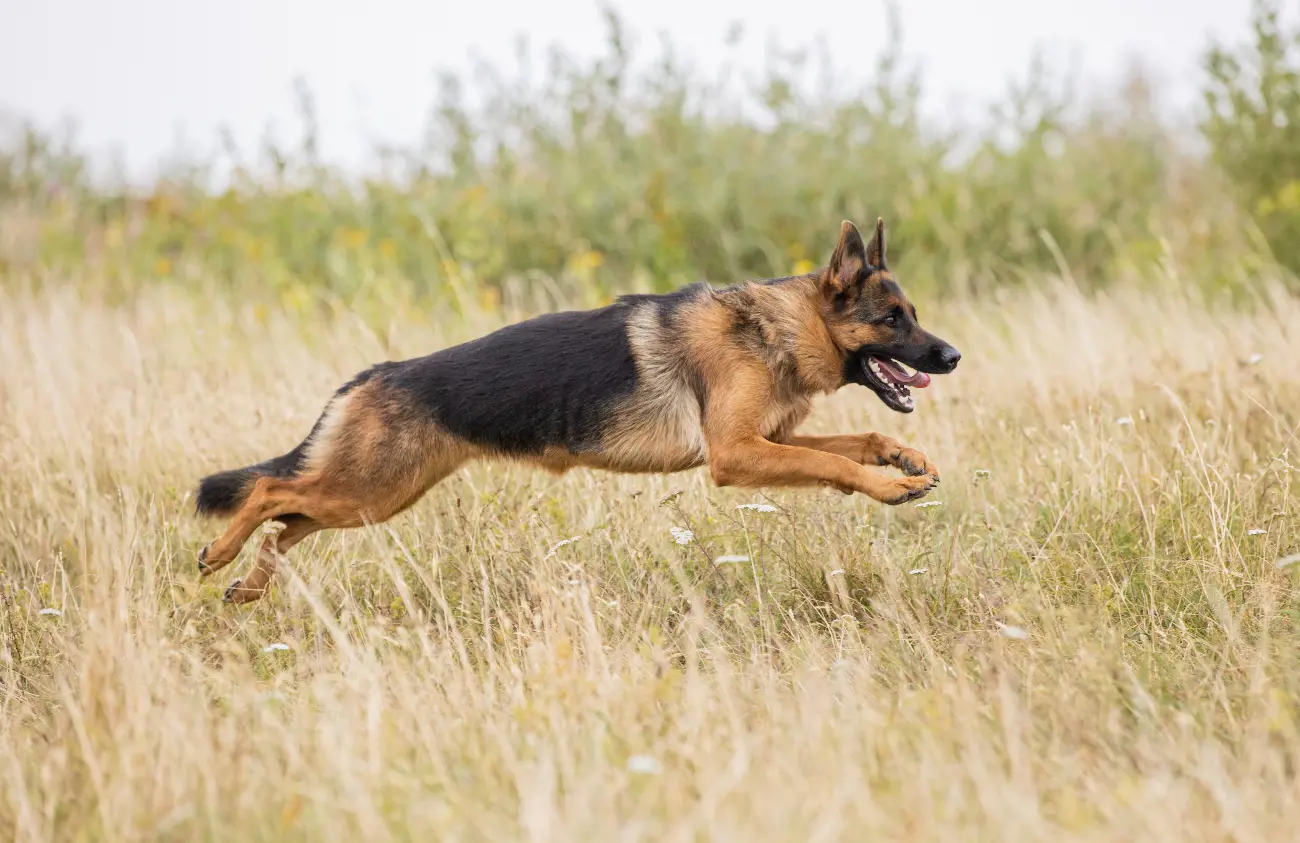What to do when your dog is overstimulated: Decoding overstimulation vs boredom
26th July, 2023

In these situations, it's important to understand whether your dog is experiencing overstimulation or boredom, and to know what to do when your dog is overstimulated.
This article will explore the differences between overstimulation and boredom, offer tips for managing an overstimulated dog, and provide suggestions for engaging activities to prevent boredom in the future.
Introduction to dog overstimulation and boredom
- Overstimulation: This occurs when a dog is exposed to too many stimuli at once, causing them to become overwhelmed and unable to cope. This can lead to a range of unwanted behaviours, such as excessive barking, jumping, and even aggression. A dog experiencing overstimulation may be exposed to too much noise, activity, or unfamiliar surroundings, causing them to feel overwhelmed.
- Boredom: This is a lack of mental stimulation and this may result in negative behaviours like destructive chewing or digging. A dog that is bored may not have enough mental or physical stimulation in their daily routine, leading to feelings of restlessness and dissatisfaction.
Both overstimulation and boredom can be detrimental to your dog's well-being, so it's crucial to recognise the signs and address the issue appropriately.
So, by understanding the difference between overstimulation and boredom, it may help in determining the proper course of action for your dog.
Signs of an overstimulated dog
If you're wondering, "Is my dog overstimulated or bored?" it’s important to recognise the signs of an overstimulated dog. These can include:
- Inability to settle down or relax, even when in a familiar environment
- Excessive barking or whining
- Jumping or nipping at people or other animals
- Pacing or panting
- Over-grooming or licking themselves
- Destructive behaviours, such as chewing on furniture or digging
As you can see, many of these signs can also be indicative of boredom, so it's crucial to determine the underlying cause of these behaviours to effectively address the issue.
Stimuli and sensory receptors in canines
As dog owners and canine enthusiasts, understanding the intricacies of the stimuli and sensory receptors in canines may help to fully appreciate the way our furry friends perceive the world around them.
With a complex and highly-developed sensory system, dogs are able to effortlessly process various stimuli, making these fascinating creatures all the more remarkable.
Stimuli and sensory receptors in canines play a pivotal role in how dogs perceive and respond to their environment. Their sensory receptors are specialised cells that detect specific stimuli like:
Light
Light plays a vital role in a canine's sensory perception, as it directly impacts their vision and overall awareness. Dogs have a unique visual system, which includes specialised cells called rods and cones. These cells are responsible for detecting light and translating it into images, allowing dogs to see and process the world around them.
Interestingly, canines have a higher number of rods in their eyes compared to humans, which enables them to see better in low light conditions. This adaptation provides them with a distinct advantage when hunting or navigating in dimly lit environments. Find out what dogs can actually see elsewhere on our site.
Sound
Dogs have an exceptional ability to hear a wide range of frequencies. This heightened auditory perception enables them to detect even the faintest sounds, which can be crucial in situations like search and rescue missions or simply recognising the familiar sound of their owner's footsteps.
Touch
The tactile sensory receptors in canines are particularly well-developed in their whiskers, paws, and skin, allowing them to feel subtle vibrations, changes in pressure, and temperature variations.
These receptors provide dogs with essential information about their environment, helping them navigate and interact with the world around them.
Taste
Taste in canines is facilitated through taste receptors located on their tongue, which are designed to detect and respond to various taste stimuli. These receptors enable dogs to distinguish between different flavours, such as sweet, salty, sour, and bitter, ultimately aiding them in determining the palatability of the food they consume.
The presence of these taste receptors not only helps canines maintain a balanced diet, but also serves as a mechanism to avoid ingesting something that they shouldn’t.
Smell
Canines have a powerful sense of smell. Dogs possess an extraordinary number of olfactory receptors, approximately 50 times more than humans, which allows them to detect scents with incredible accuracy.
This heightened sense of smell is particularly useful in various ways, such as tracking scents, detecting explosives, or even finding missing people.
These receptors are responsible for converting the detected information into electrical signals that can be processed by the brain, ultimately enabling dogs to make sense of their surroundings.
How to differentiate between overstimulation and boredom

To determine whether your dog is overstimulated or bored, consider the context in which these behaviours are occurring. If your dog is exhibiting signs of overstimulation in a chaotic or unfamiliar environment, such as a busy park or during a loud thunderstorm, it's likely that they are overwhelmed by the stimuli around them.
On the other hand, if your dog is displaying these behaviours when there is a lack of mental or physical stimulation, such as during long periods of inactivity or when left alone for extended periods, boredom may be the culprit.
Another way to differentiate between overstimulation and boredom is to observe your dog's body language. Overstimulated dogs may appear tense and agitated, with a stiff body posture and dilated pupils.
In contrast, a bored dog may have a more relaxed body posture and display behaviours such as yawning or sighing.
Suggestions for calming activities for overstimulated dogs

Jennifer Macindoe, BVMS MRCVS
Veterinary SurgeonWhile physical and mental stimulation is extremely important for all dogs, it’s also helpful to be aware of ways to help calm your dog. Using calming supplements and pheromone diffusers can be useful. As can playing gentle music; it’s been shown that classical, reggae, and nature sounds can all be useful to help naturally calm your dog. Activities at home, such as grooming, using snuffle-mats, or teaching them a new trick can all help to calm a hyper dog. Use a soft, gentle voice and avoid noisy areas with lots of distractions.
Causes of overstimulation in dogs
There are several factors that can contribute to overstimulation in dogs, including:
- Excessive noise, such as loud music, construction, or fireworks
- Crowded or chaotic environments, like busy parks or family gatherings
- Abrupt changes in routine or environment, such as moving to a new home or the arrival of a new pet or family member
- Prolonged exposure to unfamiliar people or animals
- Lack of proper training or socialisation
By identifying the specific cause of your dog's overstimulation, you can take steps to address the issue and help your dog feel more comfortable and secure.
Tips for managing an overstimulated dog
If you've determined that your dog is overstimulated, here are some tips for managing their behaviour:
- Remove your dog from the overwhelming situation, if possible. This may mean leaving a crowded park, retreating to a quiet room during a noisy event, or providing a safe space for your dog to relax at home.
- Create a calm and predictable environment for your dog by establishing a consistent routine and providing a designated space for them to rest and decompress.
- Use positive reinforcement techniques, such as praise and treats, to reward calm behaviour and discourage over-excitement.
- Gradually expose your dog to new experiences and stimuli, allowing them time to adjust and become more comfortable in various situations.
- Consider working with a professional dog trainer or behaviourist to address any underlying issues that may be contributing to your dog's overstimulation.
What to do when your dog is overstimulated: Practical solutions
In addition to the tips above, there are several practical solutions you can implement when your dog is overstimulated:
- Offer a calming aid, such as a chew toy or puzzle toy, to help your dog focus their energy on a productive activity.
- Use calming products, like a Thundershirt or calming pheromone spray, to help reduce anxiety and promote relaxation. Read our blog on how to help your dog if they suffer from anxiety for some additional tips.
- Implement a "time-out" by placing your dog in a designated area with minimal distractions until they have calmed down.
- Engage your dog in a calming activity, such as a gentle massage or brushing, to help them relax and refocus their energy.
Preventing overstimulation in the future
To prevent future instances of overstimulation, consider implementing the following strategies:
- Gradually expose your dog to new experiences and environments, allowing them time to adjust and become more comfortable.
- Establish a consistent daily routine that includes regular exercise, mental stimulation, and opportunities for socialisation.
- Monitor your dog's behaviour and body language closely, intervening early if you notice signs of overstimulation.
- Work with a professional dog trainer or behaviourist, if necessary, to address any underlying issues or concerns.
Identifying and addressing dog boredom
If you've determined that your dog is bored, rather than overstimulated, it's important to address this issue by providing appropriate mental and physical stimulation. Ensure your dog is receiving regular exercise, socialisation, and opportunities for play and exploration.
Additionally, consider incorporating interactive toys, puzzle feeders, and training exercises into your dog's daily routine to keep them mentally engaged.
Socialisation tips to avoid overstimulation in dogs

Jennifer Macindoe, BVMS MRCVS
Veterinary SurgeonSocialisation is extremely important in dogs to help them prepare for non-stressful interactions with people, other animals, and even objects or noises. Make sure to gradually expose them to new experiences to avoid sensory overload. Make sure your dog has the right amount of physical and mental stimulation, too little or too much can lead to issues. Make sure your dog takes enough naps for their age, provide them with a safe and quiet environment so that they feel comfortable to sleep. Feeding can also play an important role in stimulation. Use slow or puzzle feeders to make mealtimes more interesting. As can playing gentle music; it’s been shown that classical, reggae, and nature sounds can all be useful to help naturally calm your dog. Activities at home, such as grooming, using snuffle-mats, or teaching them a new trick can all help to calm a hyper dog. Use a soft, gentle voice and avoid noisy areas with lots of distractions.
Socialise your dog from an early age
When you socialise your dog from an early age, you are laying the foundation for a well-adjusted, confident, and friendly pet who can navigate various social situations with ease. This not only leads to a happier and more relaxed dog but also reduces the chances of behavioural issues that can cause stress for both you and your furry companion.
The process of socialising your dog from an early age involves exposing them to a wide range of experiences, people, and other animals in a positive and controlled manner. This helps them to become comfortable and confident in different environments, which is crucial for their overall development.
It is essential to start socialising your dog as a puppy, as this is when they are most receptive to new dog experiences and can form positive associations more easily.
There are several ways to socialise your dog from an early age including:
- Young puppies socialisation classes
- Playdates with other dogs
- Frequent visits to dog-friendly public spaces
When introducing your dog to new experiences, always remember to keep it positive and rewarding, as this will help them associate the situation with good things.
Be patient and consistent, and remember that every dog is different – other dogs may take longer to adjust to new situations than others.
Activities to keep your dog mentally stimulated and engaged
Here are some suggestions for activities to help prevent boredom and keep your dog mentally stimulated:
- Interactive toys and puzzle feeders: These may challenge your dog to solve problems and engage their cognitive skills.
- Training exercises: This includes teaching new tricks or commands, to challenge your dog mentally and strengthen the bond between you.
- Socialisation activities: This includes doggy play dates or group training classes, to provide opportunities for your dog to interact with other dogs and people.
- Enrichment activities: Such as scent games or agility training, which offer physical and mental stimulation while allowing your dog to use their natural instincts and abilities.
- Regular exercise: These may include activities like walking, hikes, and games of fetch, to keep your dog physically active and engaged.
Balancing stimulation and relaxation for a happy, healthy dog

In conclusion, it's good to strike a balance between providing appropriate mental and physical stimulation for your dog while also ensuring they have opportunities to relax and decompress.
By understanding the differences between overstimulation and boredom, you can effectively address these issues and create a happy, healthy environment for your beloved canine companion.
And speaking of a happy, healthy dog, having dog insurance can give you peace of mind knowing that your furry friend is covered in case of accidents or illnesses.
To get a dog insurance quote for your furry friend, you can get a quote through our website. If you would like to talk to speak to one of our dog insurance specialists, you can get in touch with us on 0330 102 5748.
Helpful Pages
Recent Posts

Why do Pugs lick the air?
02/10/24Pet Insurance Quote
- 98% claims paid *
- Claims paid directly to vets
- 24/7 vet video consultations
- Interest free monthly payments



